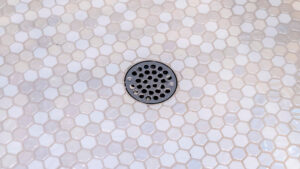A water heater pressure relief valve is a crucial component in maintaining the safety and efficiency of your water heating system. Designed to release pressure if the water heater becomes too pressurized, it prevents potential explosions and damages. Understanding its function and maintenance is vital for industrial engineers and anyone who operates or services these systems.

What is a Pressure Relief Valve?
A pressure relief valve is a safety device designed to control or limit the pressure in a system. In the context of water heaters, it ensures that the pressure does not build up to dangerous levels. This is particularly important in industrial settings where high-capacity water heaters are used.
Why is it Important?
The importance of the water heater pressure relief valve cannot be overstated. It acts as a fail-safe, protecting both the equipment and users from potential harm. Without it, excessive pressure can lead to catastrophic failure of the water heater.
How Does It Work?
The valve is usually set to open at a specific pressure threshold. When the pressure inside the tank exceeds this threshold, the valve opens, allowing water to escape and consequently reducing the pressure. This process is crucial for preventing damage to the water heater and ensuring safety.
Components of a Pressure Relief Valve
The main components include the valve body, spring, and disc. Each plays a role in maintaining the integrity of the valve’s operation. Understanding these components helps in troubleshooting and maintaining the valve effectively.
Installation of a Pressure Relief Valve
Proper installation is key to the effective functioning of a water heater pressure relief valve. It should be installed at the top of the water heater to ensure it can effectively release pressure. Installation involves connecting the valve to the appropriate outlet and ensuring it is securely in place.
Common Installation Mistakes
Some common mistakes include improper sizing, incorrect positioning, and failure to follow manufacturer guidelines. These mistakes can compromise the valve’s effectiveness and lead to safety hazards.
Maintenance and Inspection
Regular maintenance and inspection are essential for the reliable operation of a pressure relief valve. This includes checking for leaks, corrosion, and ensuring the valve is not blocked or damaged. Read more about maintenance tips.
Signs of a Faulty Valve
Signs that a valve might be faulty include water leakage, inability to open or close properly, and unusual noises. Addressing these issues promptly can prevent further damage and ensure safety.
Troubleshooting Common Issues
Common issues with pressure relief valves include leaks, corrosion, and blockages. Troubleshooting involves identifying the root cause and taking corrective action. Explore more on troubleshooting.
Replacing a Pressure Relief Valve
If troubleshooting does not resolve the issue, replacement may be necessary. Ensure the new valve is compatible with the water heater and installed correctly to avoid future issues.
Choosing the Right Valve
Choosing the right valve involves considering the water heater’s specifications, including pressure and temperature ratings. It’s also essential to consider the valve’s material and design to ensure compatibility and longevity.
Factors to Consider
Consider factors such as the water heater’s size, pressure rating, and the environment in which it operates. These factors influence the valve’s performance and longevity.
Compliance with Standards
Ensuring compliance with industry standards like the ASME code is crucial for safety and performance. Learn more about compliance.
Industry Regulations
Familiarize yourself with industry regulations to ensure your system meets safety and operational standards. This includes adhering to local and international guidelines.
Innovations and Future Trends
Innovations in pressure relief valves are continuously improving safety and efficiency. Keeping abreast of these trends can help you make informed decisions about equipment upgrades and maintenance.
Technological Advances
Advances in materials and design are enhancing the performance of pressure relief valves, making them more reliable and efficient.
Conclusion
A water heater pressure relief valve is an indispensable component in ensuring the safety and efficiency of water heating systems. By understanding its function, installation, and maintenance, industrial engineers can prevent potential hazards and improve system performance. For a deeper understanding of how these valves work, visit this external guide.

FAQs
1. How often should a pressure relief valve be inspected?
It should be inspected at least once a year to ensure it is functioning properly and safely.
2. Can a pressure relief valve be repaired?
While some minor issues can be addressed, significant damage often requires replacement of the valve.
3. What causes a pressure relief valve to fail?
Common causes include corrosion, blockage, and improper installation. Regular maintenance can help prevent these issues.
This article contains affiliate links. We may earn a commission at no extra cost to you.




